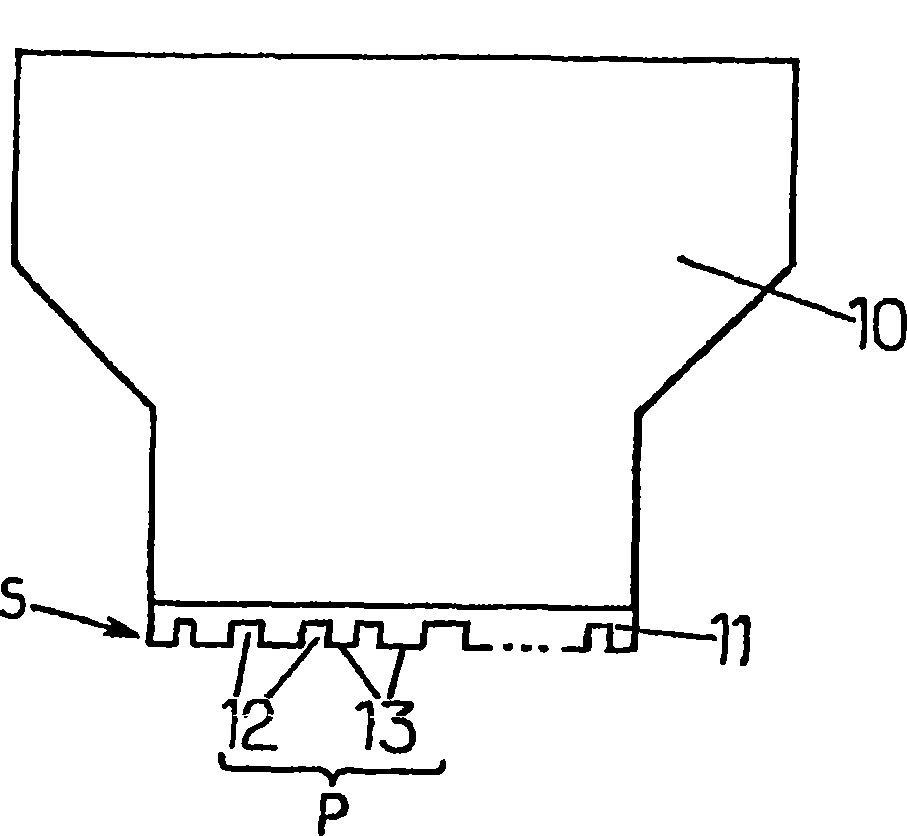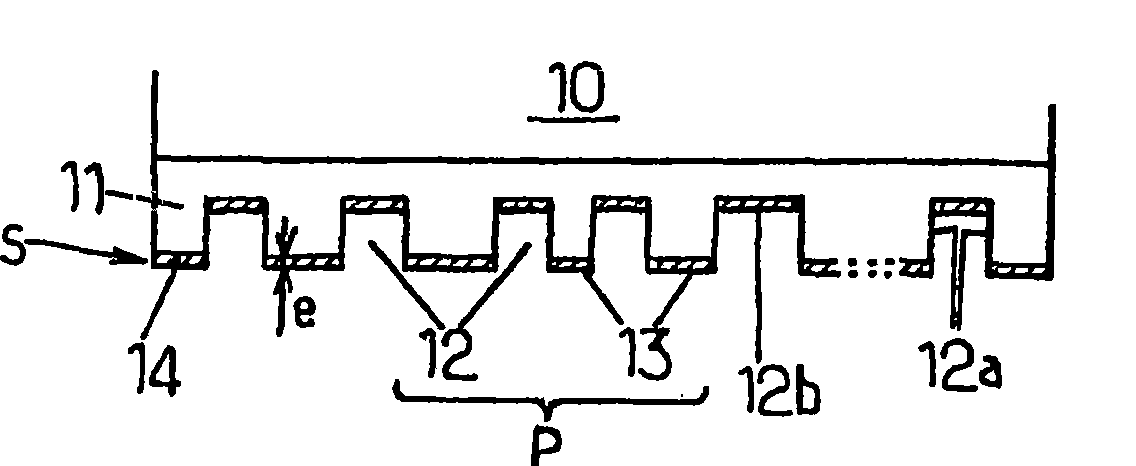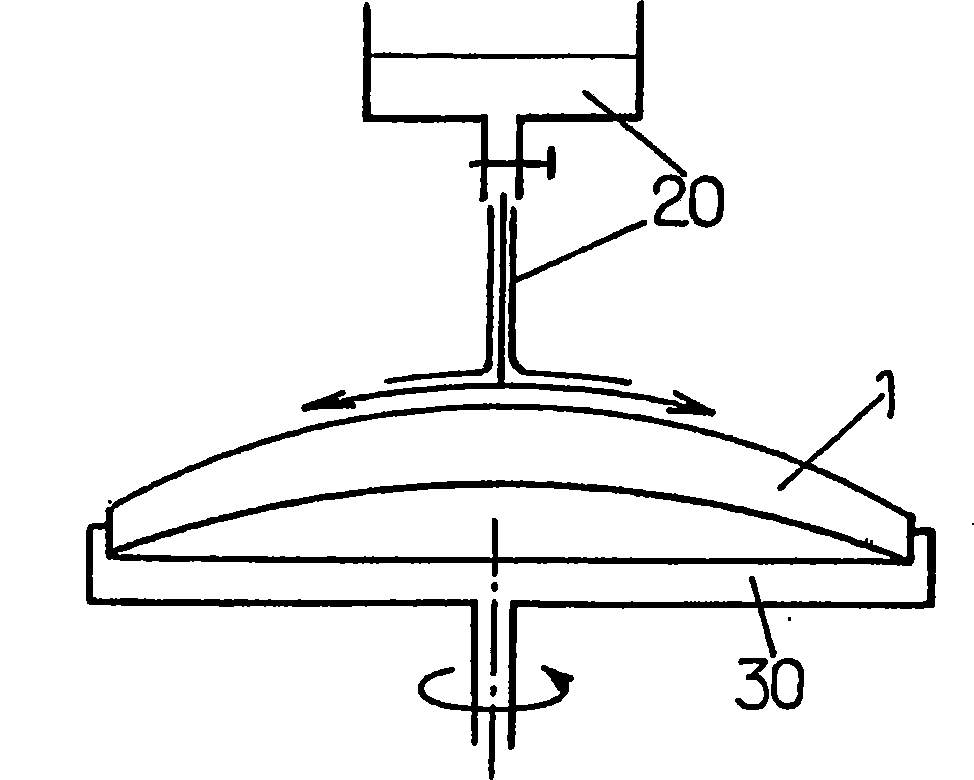Method for transferring a micron pattern on an optical pattern and the thus obtained optical pattern
A micron-scale, patterned technology that is used in the field of optical articles, optical lens type products, and spectacle lens types
- Summary
- Abstract
- Description
- Claims
- Application Information
AI Technical Summary
Problems solved by technology
Method used
Image
Examples
no. 1 example
[0107] If the pressure is less than a pressure P limit : The transfer is selective; this is the first embodiment according to the invention: Amplitude hologram.
[0108] If the pressure is greater than a pressure P limit : A complete transfer occurs, accompanied by a permanent impression of the rubber layer, replicating the micro-reliefs complementary to the micro-reliefs composing the stamp pattern P on the stamp.
[0109] The P limit It is determined for a 30nm gold or aluminum layer on rubber deposited under the above conditions.
[0110] P limit is 45g / mm of the surface of the stamp protrusions 13 that make up the pattern P 2 ~60g / mm 2 pressure.
[0111] The table below shows the results under different test conditions:
[0112]
[0113] Pressure applied to selectively transfer gold example:
[0114] The stamper is applied to the convex surface of an ophthalmic lens covered with a layer of rubber deposited under the above conditions (the radius of curvature of t...
PUM
| Property | Measurement | Unit |
|---|---|---|
| size | aaaaa | aaaaa |
| size | aaaaa | aaaaa |
| size | aaaaa | aaaaa |
Abstract
Description
Claims
Application Information
 Login to View More
Login to View More - R&D
- Intellectual Property
- Life Sciences
- Materials
- Tech Scout
- Unparalleled Data Quality
- Higher Quality Content
- 60% Fewer Hallucinations
Browse by: Latest US Patents, China's latest patents, Technical Efficacy Thesaurus, Application Domain, Technology Topic, Popular Technical Reports.
© 2025 PatSnap. All rights reserved.Legal|Privacy policy|Modern Slavery Act Transparency Statement|Sitemap|About US| Contact US: help@patsnap.com



